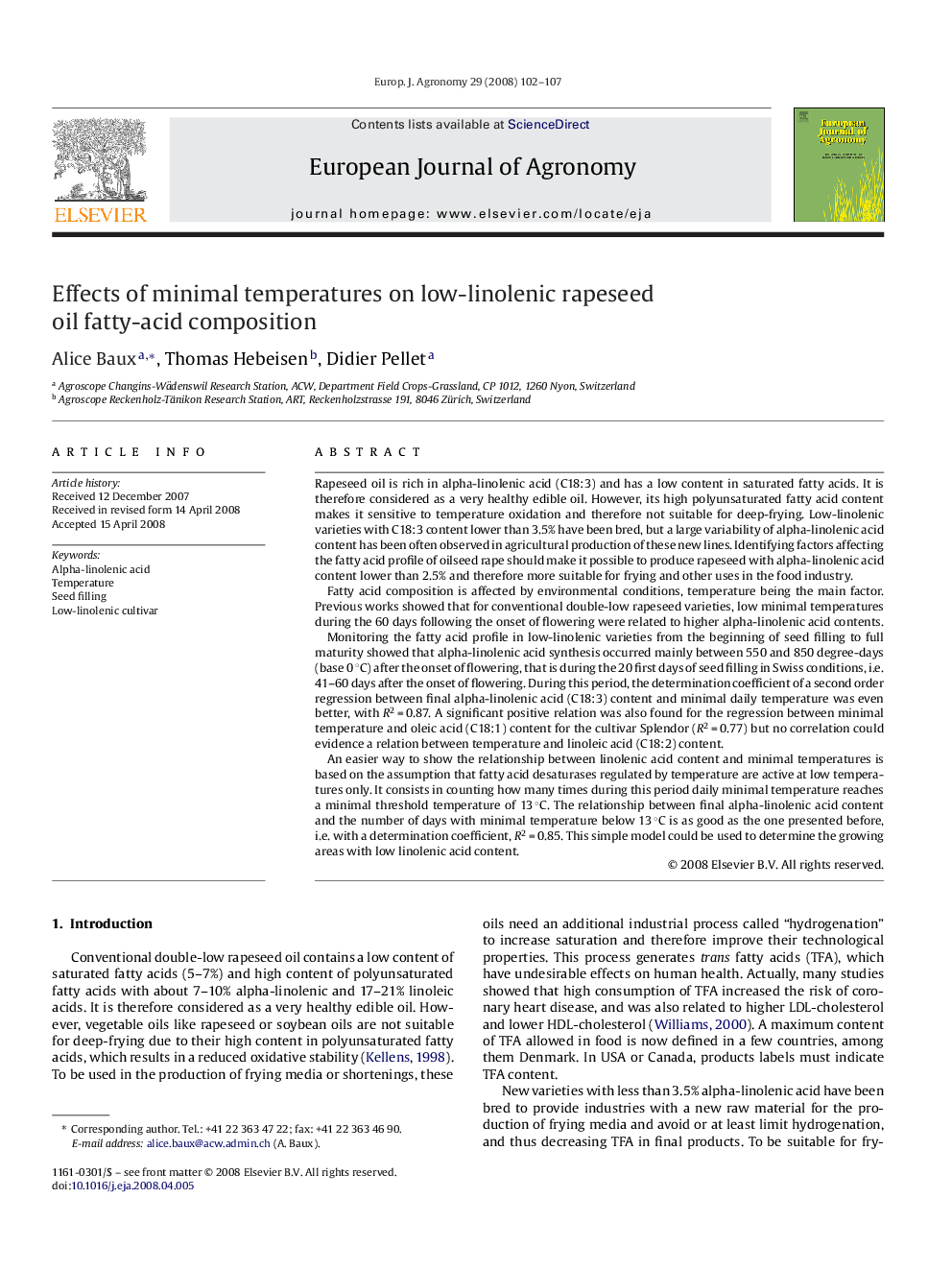| کد مقاله | کد نشریه | سال انتشار | مقاله انگلیسی | نسخه تمام متن |
|---|---|---|---|---|
| 4509543 | 1624516 | 2008 | 6 صفحه PDF | دانلود رایگان |

Rapeseed oil is rich in alpha-linolenic acid (C18:3) and has a low content in saturated fatty acids. It is therefore considered as a very healthy edible oil. However, its high polyunsaturated fatty acid content makes it sensitive to temperature oxidation and therefore not suitable for deep-frying. Low-linolenic varieties with C18:3 content lower than 3.5% have been bred, but a large variability of alpha-linolenic acid content has been often observed in agricultural production of these new lines. Identifying factors affecting the fatty acid profile of oilseed rape should make it possible to produce rapeseed with alpha-linolenic acid content lower than 2.5% and therefore more suitable for frying and other uses in the food industry.Fatty acid composition is affected by environmental conditions, temperature being the main factor. Previous works showed that for conventional double-low rapeseed varieties, low minimal temperatures during the 60 days following the onset of flowering were related to higher alpha-linolenic acid contents.Monitoring the fatty acid profile in low-linolenic varieties from the beginning of seed filling to full maturity showed that alpha-linolenic acid synthesis occurred mainly between 550 and 850 degree-days (base 0 °C) after the onset of flowering, that is during the 20 first days of seed filling in Swiss conditions, i.e. 41–60 days after the onset of flowering. During this period, the determination coefficient of a second order regression between final alpha-linolenic acid (C18:3) content and minimal daily temperature was even better, with R2 = 0.87. A significant positive relation was also found for the regression between minimal temperature and oleic acid (C18:1) content for the cultivar Splendor (R2 = 0.77) but no correlation could evidence a relation between temperature and linoleic acid (C18:2) content.An easier way to show the relationship between linolenic acid content and minimal temperatures is based on the assumption that fatty acid desaturases regulated by temperature are active at low temperatures only. It consists in counting how many times during this period daily minimal temperature reaches a minimal threshold temperature of 13 °C. The relationship between final alpha-linolenic acid content and the number of days with minimal temperature below 13 °C is as good as the one presented before, i.e. with a determination coefficient, R2 = 0.85. This simple model could be used to determine the growing areas with low linolenic acid content.
Journal: European Journal of Agronomy - Volume 29, Issues 2–3, August 2008, Pages 102–107